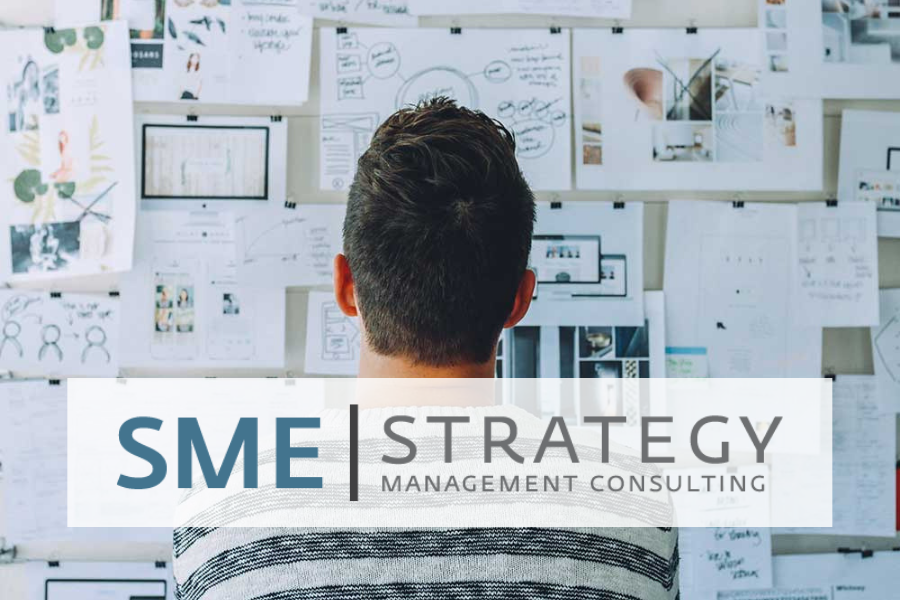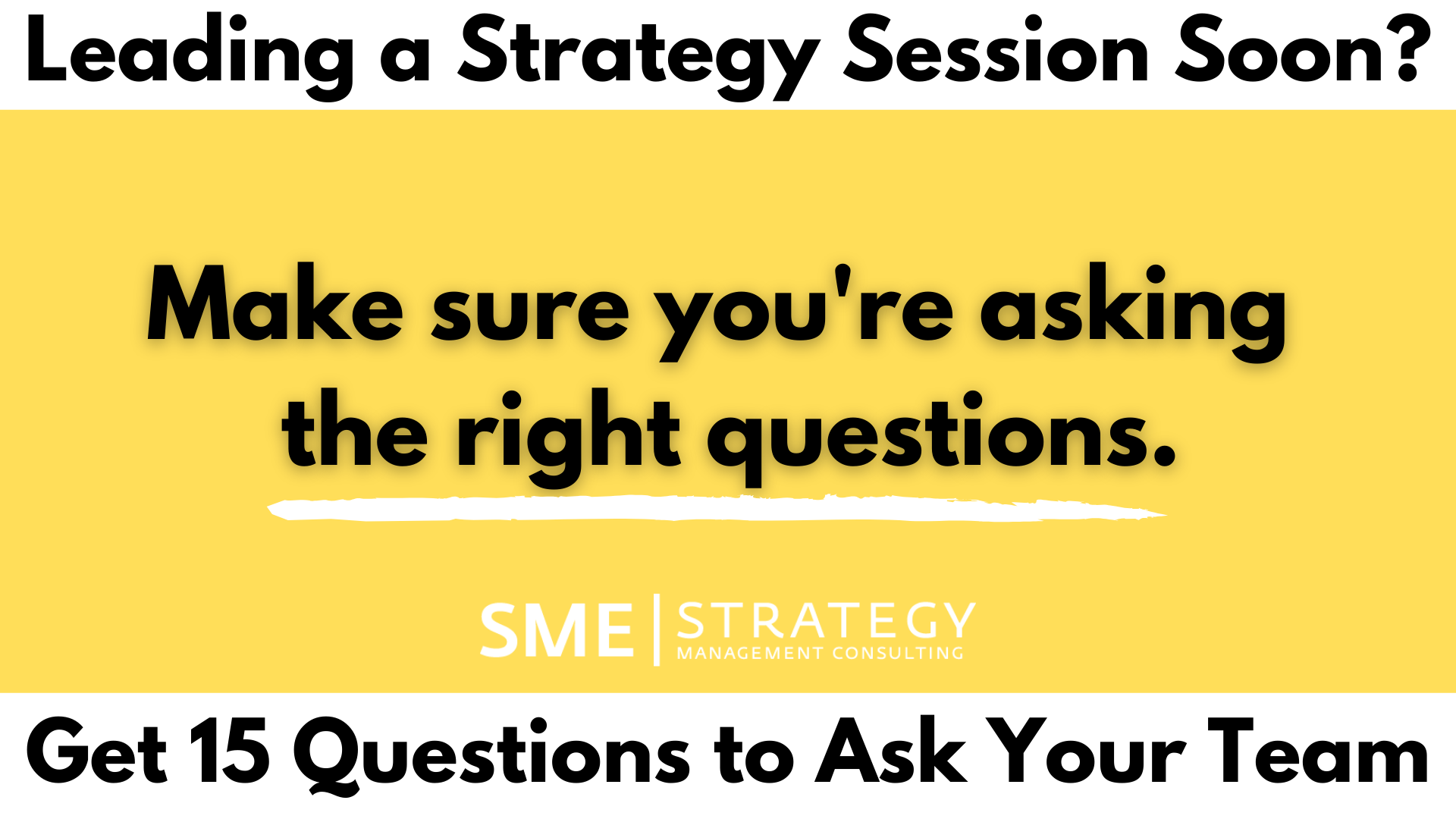
SME Strategy is a strategy consulting company that specializes in aligning teams around their vision, mission, values, goals and action plans. Learn more about how we can help you and your team create a strategic plan with our strategic planning and implementation services.
This May, I moved to Vancouver to join SME Strategy as co-op student. The role was described as a marketing role at a small and growing consulting company, so I was excited by the opportunity. Shortly after arriving, I realized my role would expand to be much more than originally expected. I was eventually tasked with a variety of tasks that fit into the marketing bucket, including one-to-one sales, content creation, email marketing and copywriting.
As a student arriving straight of college, I had little knowledge of the consulting industry as a whole, let alone its size and scope. SME Strategy specializes in strategic planning, which fits under the management consulting umbrella. There was a lot to learn, and I started at the ground floor. Over the next several months, I would take courses, read about, receive mentorship, listen to coaching calls and sit in on strategic planning sessions to understand the processes involved in strategic planning. By receiving guidance and mentorship from our Managing Partner who’s facilitated strategic planning sessions around the world for businesses, schools, governments and nonprofits, I was able to learn a great deal. This is what I learned:
- Importance of the vision and mission
Figuring out your organization’s vision and mission is one of the most important parts of the planning process, as well as one of the deciding factors of success or failure. Determining a clear vision and mission for your organization will set the table for the rest of the planning process, allowing you to come up with clear, measurable goals that will directly impact the future of the organization for the better. Without a clear vision and mission, you team is destined for burnout. If your team doesn’t know what they’re working towards they won’t know which direction to move, making it easier for them to disengage.
The vision represents where the organization would like to be in the future, whether that be one, three or five years ahead of today. Naturally, getting alignment around the vision can be tough. Surely, not everyone has the same career goals, personal aspirations and ideal future for the organization. At SME Strategy, we put a focus on figuring out where there’s alignment and where there’s not. Not everyone has to agree, but it’s valuable to hear what people think about the future.
The mission is the second part of the planning process, and should ultimately help your organization achieve the mission. In short, the mission should encapsulate why the organization exists. This includes what products and services you offer, where you do business and who you serve. A strong mission will allow you and your team to ask “Is this in line with our mission?” whenever the organization has a decision to make.
For help creating your organization’s vision and mission, check out this previous blog post: How to Create a Vision.
Need help with your strategic planning process? A facilitator can help:
- Pre-session and post-session work
Before I learned about the strategic planning process, I assumed that strategy meetings would simply take place and then the organization would set off down a new path. What I didn’t realize was the amount of buy-in required from all participants. Not only do they have to attend the strategy session, but there’s a considerable amount of pre-session and post-session work required in order to get the most out of strategic planning.
At SME Strategy, we like to engage all strategy session participants in a survey as part of the pre-session work. The survey is used as a probe to figure out what is going right within the organization, and where there are challenges that need to be addressed. In a survey of 10 people, it’s easy to detect recurring themes and problems. During the session, in a scenario where people would normally be averse to sharing their honest opinion about the organization in front of their boss, the anonymous results of the survey are read out loud. At this point, everything is out on the table and people are ready to move forward with planning for the future.
After the strategy session, there’s a considerable amount of work to be done by each participant. Once goals, tactics and actions have been hammered out, there needs to be alignment between the new plan and whoever needs to know about it. SME Strategy can also assist in the post-session work to provide accountability. At whichever frequency your organization desires, a combination of conference calls, meetings and one-on-one calls will keep the team on track.
- Having measurable goals
One of the biggest challenges people face with the strategic planning process is creating measurable goals. Date ranges, revenue targets, satisfaction scores, return rates and number of calls are all examples of what makes a goal measurable. If there’s no way to measure a goal, you won’t be able to tell when or if you’ve failed. That’s why they can be so tough to set- it requires conviction and commitment throughout your organization.
Without something to work towards, team members will be lost and lack the drive necessary to produce the best goods and services. Measurable goals can be the driving factor of motivation among your team if done correctly. Friendly competition, bonuses and recognition can unify and inspire your organization to fulfill the mission and vision.
- Focus
Focusing in on just a couple strategic priorities can be one of the hardest aspects of strategic planning for organizations. On the day of the strategy session, there is often a sense of urgency in the air as everyone is keen to resolve different challenges and point the organization towards a slightly different direction. Unfortunately, having too many goals and strategic priorities is a recipe for failure. In this case, the organization will be pulled in too many directions with resources stretched too thin, resulting in not much progress at all.
The best strategic plans are the ones that get executed on, and the ones that get executed on have a precise focus on just a couple areas. Organizations in this position are able to fully dedicate themselves to their goals and point all their resources in one place. The power of focus is preached by business leaders like Elon Musk and Jeff Bezos, and should be observed before embarking on your next strategic planning session.



